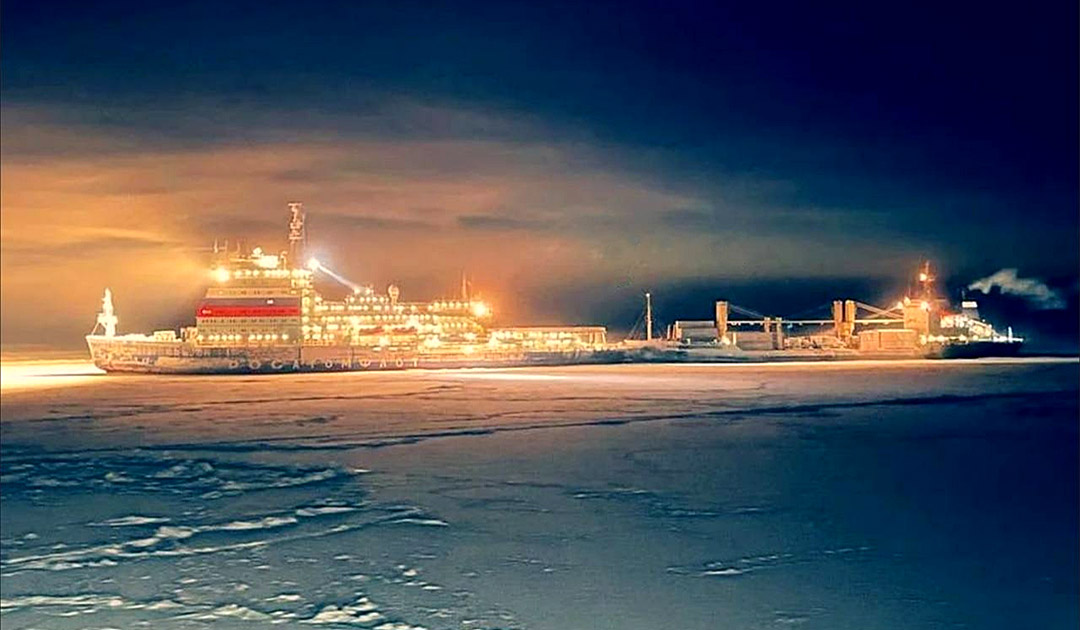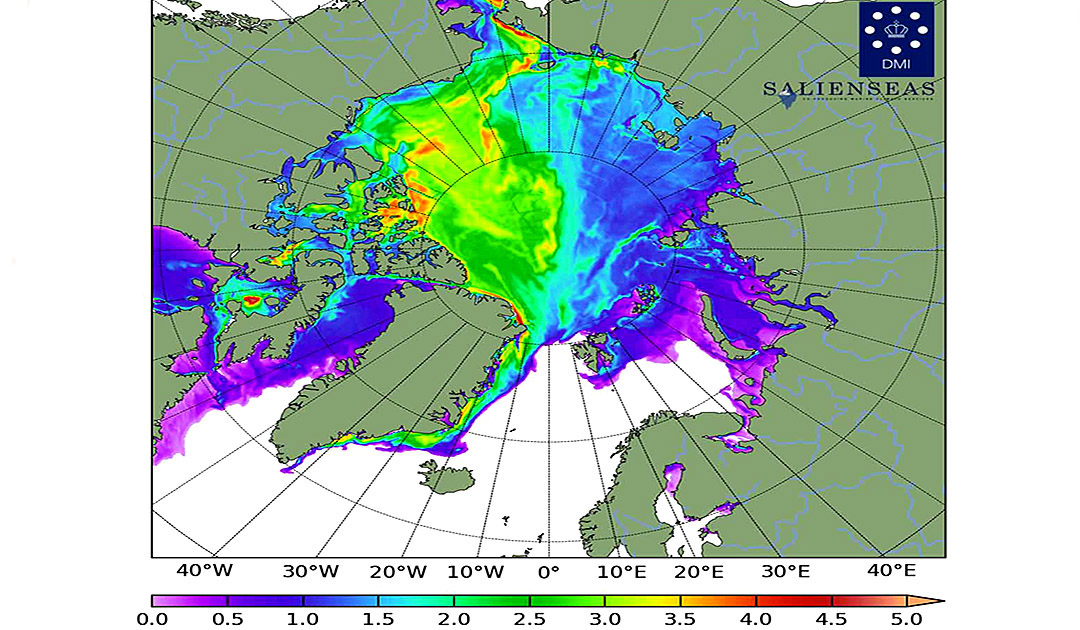
Arctic sea ice extent grew faster than average in the winter of 2021/22, bucking the trend of ice melt, reaching 13.88 million square kilometers (5.36 million square miles) in January 2022. According to the National Snow and Ice Data Center, this is actually the highest expansion in the last 14 years. A cool summer and fall, especially over the Arctic Ocean, led to a rapid increase in sea ice earlier this year.

That things could turn out differently than in previous years was already apparent in November 2021 in the Northeast Passage. After an early frost, there was a closed layer of fast ice along the Arctic coasts of Russia 2 months earlier than in previous years. The waters of the East Siberian Sea, Laptev Sea and Kara Sea were covered with sea ice up to 2 meters thickness. Ships had trouble making it through the region. In early November, more than 20 ships got stuck. The requested nuclear icebreaker “Arktika” rushed to the rescue and was able to convoy the trapped cargo ships to safe waters.
In January, four ships were still frozen in the Northeast Passage. Two freighters were stranded in the port of Pevek after delivering their cargo. Then, on February 9, the icebreaker “Arktika” came to Pevek to rescue them. On February 15, the convoy finally reached the Kara Sea. The convoy is expected to enter the Barents Sea at the end of February.
Is the Northeast Passage navigable all year round?
After the escort, there were no more ships in the eastern part of the Northern Sea Route. This marks the end of an extraordinary and extremely challenging winter for Rosatom and its operations along the Northern Sea Route.
Now the question arises: Is the Northeast Passage navigable all year round? Such difficult ice conditions can occur again and again. As a result, transport service providers lack planning reliability, at least for now in the winter months.
At the moment, it is difficult to say where the road is going. In the meantime, more and more major shipping companies are abandoning the shorter route across the Arctic. On the other hand, the operators of the Northeast Passage are planning to build even more and even stronger icebreakers to keep the sea route open.

Largest expansion in 14 years
At the end of January 2022, sea ice extent, which by definition covers the area of the Arctic Ocean with at least 15% of ice, was well over 14 million square kilometers. Ice extent in the Arctic Ocean increases throughout the winter, reaching its greatest extent in March. This current extent is the 16th-lowest since satellite records began in 1979, but it is actually the highest in 14 years, more specifically since 2009.
However, winter ice extent is a weak indicator of what ice extent will look like next September when we again face the annual minimum.

Since 1979, it has been possible to monitor sea ice by satellite. Currently, experts have had reliable information on the extent of sea ice cover for 43 years. Sea ice had been steadily declining, especially since the late 1990s.
With rising global temperatures, the extent and also the volume of Arctic sea ice have shrunk by an average of 13.4% per decade since 1979. The remaining ice is often thinner and more brittle than before, making it more susceptible to melting the following year.
Heiner Kubny, PolarJournal
More on the subject:





